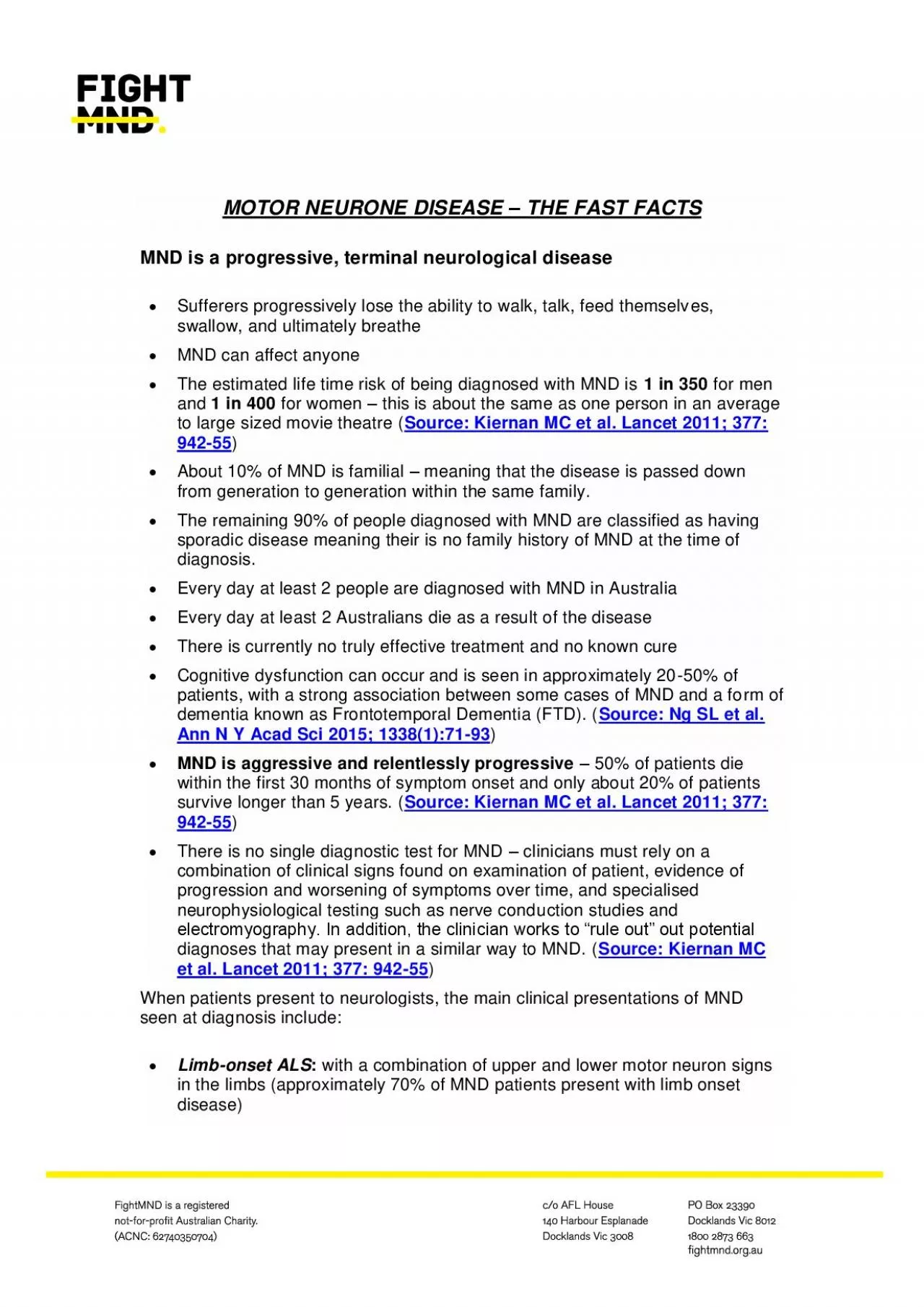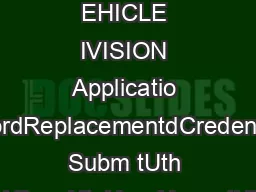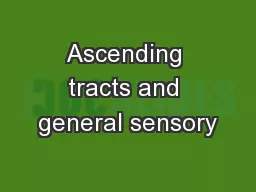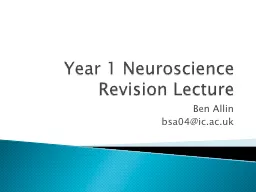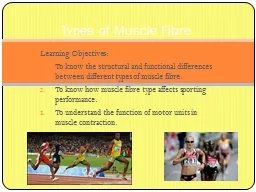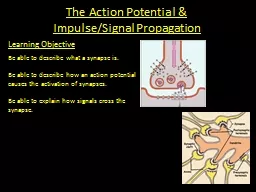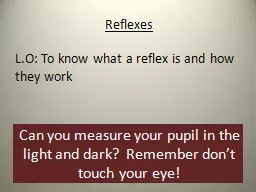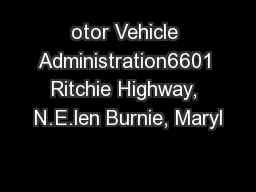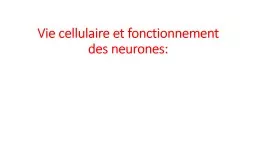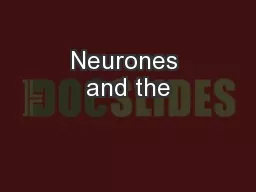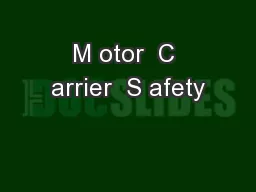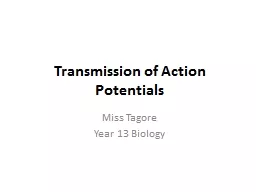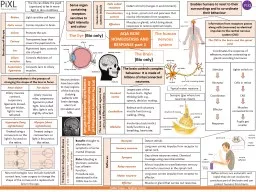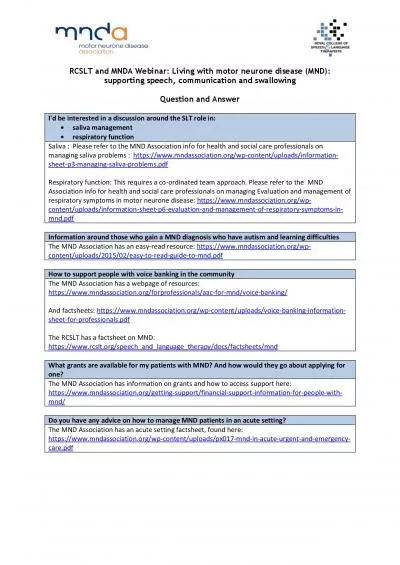PDF-OTOR NEURONE DISEASE
Author : joy | Published Date : 2022-09-01
M THE FAST FA CT S MND is a progressive terminal neurological disease Sufferers progressively lose the ability to walk talk feed themselv es swallow and ultimately
Presentation Embed Code
Download Presentation
Download Presentation The PPT/PDF document "OTOR NEURONE DISEASE" is the property of its rightful owner. Permission is granted to download and print the materials on this website for personal, non-commercial use only, and to display it on your personal computer provided you do not modify the materials and that you retain all copyright notices contained in the materials. By downloading content from our website, you accept the terms of this agreement.
OTOR NEURONE DISEASE: Transcript
Download Rules Of Document
"OTOR NEURONE DISEASE"The content belongs to its owner. You may download and print it for personal use, without modification, and keep all copyright notices. By downloading, you agree to these terms.
Related Documents

